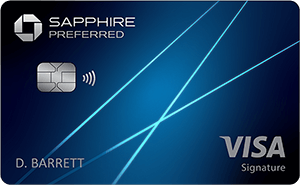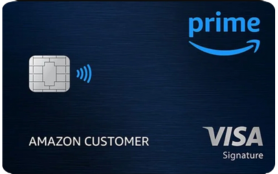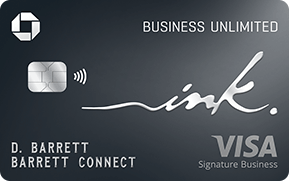Overview
There’s more than one way to skin a cat…I’m not sure who came up with that mildly disturbing proverb, but they weren’t wrong, and it’s easily applicable to saving. Most of us tie ourselves to one method: opening a savings account, dropping the funds in, and adding to it gradually. Some go one better and opt for a high-yield account, while others go even further and set themselves up with investments. But one that’s not talked about as much is Certificates of Deposits (CDs).
These handy savings tools reward patience and discipline, and can open the door for higher interest rates. Better yet, they can even keep you from dipping into your hard-earned funds.
CDs are complicated to open, and we do recommend a bit of planning first. From comparing banks and deciphering individual offers, taking the time to learn the ins and outs can ensure you get the most out of this savings option. Whether you’re saving for a medium-term financial goal or just don’t fancy investing, a CD can play a solid role in your financial repertoire.
So, let’s break down how to open a CD and what to expect along the way.
What Is a Certificate of Deposit?
A CD is a deposit account offered by banks and credit unions that locks your money in for a set length of time, known as the “term”, in exchange for a fixed interest rate. That means you’ll know exactly how much you’ll earn by the end of the term. Terms can range from just a few months to several years, and the longer you commit, the higher your rate often is.
Unlike a savings account, CDs usually don’t allow free withdrawals. Taking money out early usually triggers penalties, so they’re best suited for funds you know you won’t need until the CD is done. On the upside, they’re considered very safe, since they’re typically FDIC- or NCUA-insured up to legal limits.
The power of a CD is two-fold: the barrier to withdrawal keeps you disciplined with your savings, and the fixed interest rate means you know what you’re making from your savings.
Step 1: Decide How Much to Deposit
Before even approaching a bank, you need to know how much you’re depositing (and why you’re depositing it). The most important thing here is not setting an amount too high. You won’t be able to touch it without incurring penalties, if at all, so if you’re not completely confident you can complete the term without dipping into your savings, lower the amount.
Most banks set minimum deposit amounts, with some going as little as $500 or moving up to $1,000 and beyond.
Step 2: Compare Rates and Terms
CDs are not the same at every bank and credit union. Each comes with its own terms, APY (annual percentage yield), and unique features. It’s vital to shop around and see the different offers available to you. More importantly, you need to check term lengths and what they stipulate.
Generally, you’ll find three rough term lengths. The length of the term you pick will dictate the APY you receive. In general, the longer the term, the better the APY. Opting for a shorter term increases your flexibility, but diminishes your returns.
Short-term CDs (3–12 months): Lower rates, but cash comes back quickly.
Medium-term CDs (1–3 years): Balance between flexibility and return.
Long-term CDs (3–5+ years): Highest rates, but least flexibility.
Look at each of the offerings for a wide range of banks and credit unions until you find the one that suits your needs the best. As mentioned before, APYs range based on the bank and on term length, but right now you can see APYs range from 4-5%, if not higher.
Don’t forget, picking the long one seals that money up for a long time. Be careful with your choices.
Step 3: Choose the Type of CD
Standard CDs are your likely go-to in any scenario, but other types may suit you more. Again, sift through your options and decide what is best for you. Jumbo CDs are one of the best kinds for those with large deposits.
Beyond the standard CD, you might encounter:
No-penalty CDs: Allow early withdrawals without fees. While this sounds good, remember, it can defeat the purpose. Make sure to compare normal high-yield accounts if this appeals to you.
Bump-up CDs: Let you raise your rate if the bank’s rates increase. These can be handy for sure and add a layer of protection.
Jumbo CDs: Offer higher rates for very large deposits (often $100,000+). These are excellent for getting serious returns on massive deposits.
Step 4: Apply and Fund the CD
Once you’ve made your decision, your next step is to apply to the bank or credit union. These applications are generally straightforward and only require basic information (name, address, SSN, etc) and a funding source to link the account with. Most institutions nowadays will let you do all of this online and in a matter of minutes.
Step 5: Wait and Collect Interest
After that, you just need to….
Do nothing.
Really, that’s it. Your money is deposited, and the term has officially begun. Your money will accrue interest throughout the term length of the CD, and the full payout, including your initial deposit and interest, will be accessible when it’s done. As it’s a very hands-off process, it’s a good idea to mark the end date in your calendar to ensure you know when to withdraw or start a new term.
If it worked well for you, you might consider continuing or even upgrading to a longer-term/higher interest offer.
The Point
Opening a CD is an excellent way to balance discipline with financial reward. It takes away some of the temptation of dipping into your savings and often offers far better rates than a traditional account. While it’s a powerful way to save, it’s vital to take into account the likelihood of you needing to dip into your savings. If you’re not confident, a more traditional savings route may be more effective.









 by your friends at The Daily Navigator
by your friends at The Daily Navigator



